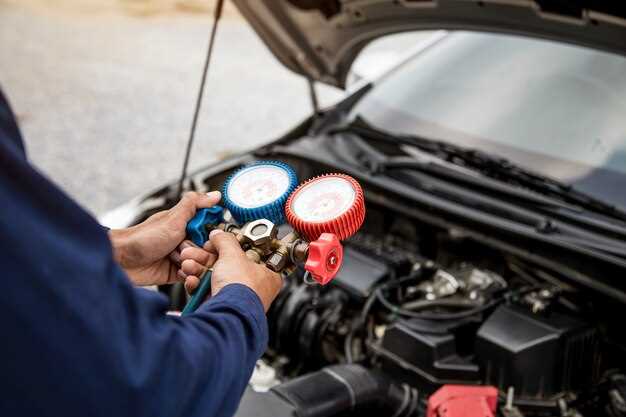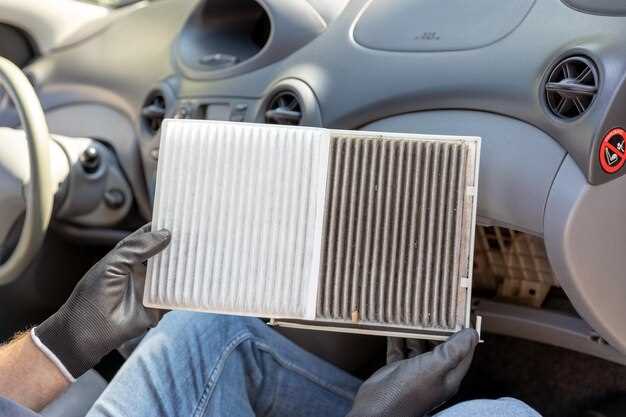
Ensuring that your car’s air conditioning system operates efficiently requires regular maintenance. A well-functioning A/C not only enhances comfort during hot weather but also contributes to a safer driving environment by preventing the buildup of fog and moisture on windows. By following essential maintenance tips, you can extend the lifespan of your vehicle’s air conditioning system and avoid costly repairs.
One of the primary aspects of effective A/C maintenance is periodic inspection and servicing. This includes checking refrigerant levels, examining hoses for leaks, and ensuring that the compressor is functioning correctly. Ignoring these components can lead to decreased efficiency and potential breakdowns, which can disrupt your driving experience.
Another crucial tip involves regularly using the A/C, even in cooler months. This practice helps lubricate the system and prevents the seals from drying out. By incorporating these maintenance habits into your routine, you can keep your car’s air conditioning system in optimal condition, providing comfort for you and your passengers throughout the year.
Regularly Check and Replace Cabin Air Filters

The cabin air filter plays a crucial role in your car’s air conditioning (AC) system, ensuring that the air circulating inside your vehicle is clean and free of contaminants. Over time, these filters can become clogged with dust, pollen, and other debris, leading to reduced airflow and compromised air quality.
It is essential to check the cabin air filter regularly, ideally every 12,000 to 15,000 miles or as recommended by your vehicle’s manufacturer. A blocked filter can strain the AC system, causing it to work harder and consume more energy, potentially leading to costly repairs.
When replacing the cabin air filter, make sure to select a high-quality filter that meets your vehicle’s specifications. Some filters come with added features like carbon layers to combat odors, further enhancing the air quality within the car.
By maintaining and replacing your cabin air filter as needed, you can improve the efficiency of your AC system, prolong its lifespan, and ensure a comfortable drive for all passengers. Regular maintenance is a small investment that can lead to significant benefits for your vehicle and your health.
Inspect and Clean the AC Condenser and Evaporator Coils

Regular maintenance of your car’s air conditioning (AC) system is essential for optimal performance and longevity. One critical aspect of this maintenance involves inspecting and cleaning the AC condenser and evaporator coils. These components play a crucial role in the cooling process by transferring heat and allowing your vehicle’s interior to remain comfortable.
The AC condenser is located at the front of your vehicle, typically in front of the radiator. Over time, it can accumulate dirt, debris, and contaminants that hinder its efficiency. To inspect the condenser, visually check for any physical damage or buildup. Use a soft brush or compressed air to gently remove any surface debris. A clean condenser enhances airflow and cooling efficiency, reducing the strain on the entire AC system.
The evaporator coil, found inside the vehicle cabin, also requires attention. It absorbs heat from the air inside the car. If the evaporator becomes clogged with dust and debris, it can lead to reduced cooling performance and even system failure. To clean it, access the coil by removing the necessary panels, carefully vacuum any dust, and use a coil cleaner to eliminate grime. Ensure that the evaporator fins are straight and unobstructed for optimal airflow.
In summary, routine inspections and cleanings of the AC condenser and evaporator coils are integral to maintaining your car’s air conditioning system. Neglecting these components can lead to inefficiencies and ultimately costly repairs. Investing time in this maintenance will ensure your AC functions effectively, keeping you comfortable on the road.
Monitor and Recharge Refrigerant Levels Annually
To ensure your car’s AC system operates efficiently, it is essential to monitor and recharge refrigerant levels at least once a year. Refrigerant is the fluid that absorbs heat from inside your vehicle and releases it outside, making it crucial for the cooling process.
Low refrigerant levels can lead to poor AC performance, higher energy consumption, and potential damage to the system. Here are some steps to help you maintain optimal refrigerant levels:
- Check for Leaks: Before recharging, inspect the AC system for any leaks. Common areas include the compressor, condenser, and hoses. Look for oil stains or signs of moisture around these components.
- Use a Refrigerant Gauge: Invest in a refrigerant gauge to check the pressure in your AC system. This tool will help determine if the refrigerant levels are within the recommended range.
- Recharge if Necessary: If your system is low on refrigerant, purchase the correct type for your AC system. Follow the manufacturer’s instructions for recharging carefully to avoid overfilling, which can cause further issues.
- Monitor Performance: After recharging, observe your cooling system’s performance. If you notice persistent issues, consider consulting a professional for a thorough inspection.
- Schedule Regular Maintenance: In addition to annual checks, consider scheduling professional maintenance every couple of years. Experts can perform a detailed analysis and identify any underlying problems.
By monitoring and recharging refrigerant levels annually, you’ll help extend the life of your AC system and ensure a comfortable driving experience throughout the hotter months.
